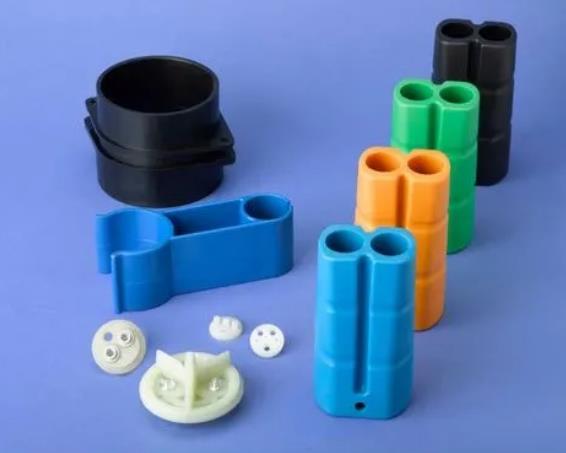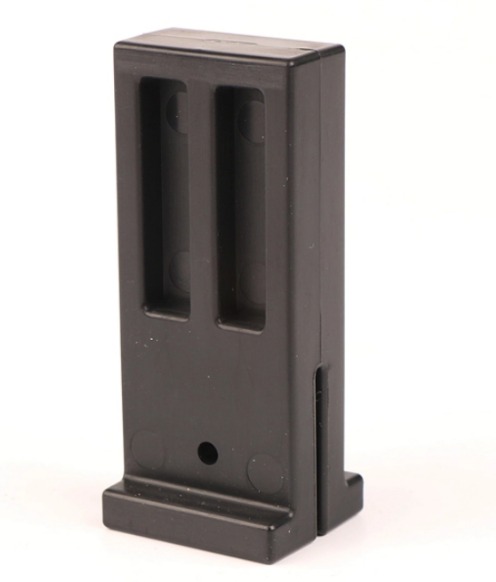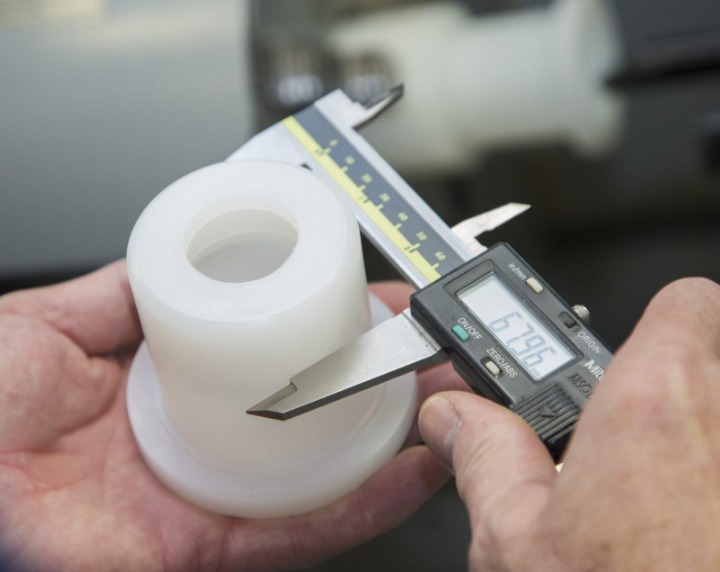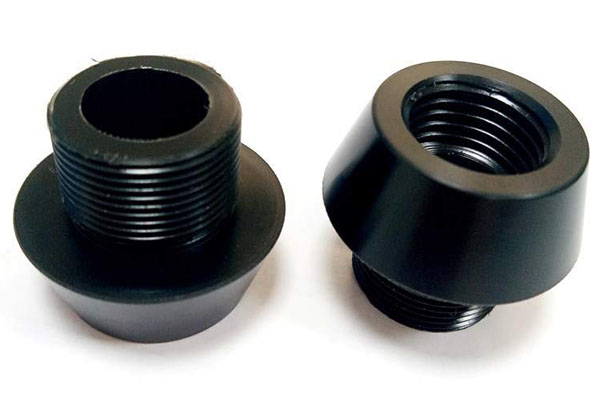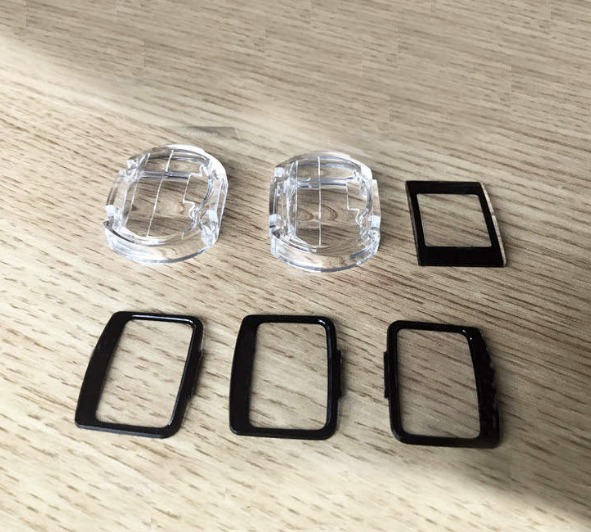What is Multilayer Injection Molding?
Multilayer injection molding is an advanced manufacturing process that allows plastic manufacturers to create highly complex and functional plastic products. At its core, this technique involves injecting different materials or colors of plastic into a mold in distinct layers. By carefully controlling the injection sequence and parameters, manufacturers can combine the unique properties of various plastics to achieve a wide range of performance characteristics.
The process typically begins with the preparation of multiple plastic materials, each with its own set of properties. For example, one layer might be chosen for its strength and durability, while another could be selected for its flexibility or aesthetic appeal. These materials are then fed into separate injection units, which are precisely calibrated to ensure accurate and consistent layer deposition.
Once the materials are ready, the injection process commences. The first layer of plastic is injected into the mold cavity, where it quickly solidifies against the cool mold walls. next,a second layer of plastic is injected on top of the first, and the process continues until all the desired layers have been added. The layers bond together during the cooling process, creating a single, unified product with a seamless interface between each layer.
One of the key advantages of multilayer injection molding is the ability to create products with enhanced functionality. For instance, by combining a rigid outer layer with a soft, flexible inner layer, manufacturers can produce items that are both strong and comfortable to hold. This is particularly useful in applications such as consumer electronics, where products need to be durable enough to withstand daily use while also providing a pleasant user experience. Additionally, the process allows for the integration of different colors or textures, enabling the creation of visually appealing products without the need for additional post - processing steps.
The Working Process of Multilayer Injection Molding
The working process of multilayer injection molding is a precise and sequential operation that requires careful control at every stage. Here is a detailed breakdown:
- Raw Material Preparation: First, the appropriate plastic materials are selected based on the desired properties of the final product. These materials are then dried to remove any moisture, as even a small amount of water can cause defects in the finished part. For example, for engineering plastics like ABS (Acrylonitrile Butadiene Styrene), the drying time can range from 2 - 4 hours at a temperature of around 80 - 90°C. The materials are also often pre - blended with additives such as colorants, flame retardants, or impact modifiers to enhance specific properties.
- Heating and Melting: The dried plastic materials are fed into separate hoppers of the injection molding machine. Each hopper leads to a heated barrel where the plastic is melted. The temperature in the barrel is carefully controlled. For instance, for polyethylene (PE), the melting temperature typically ranges from 120 - 180°C, while for polypropylene (PP), it is around 160 - 220°C. A screw mechanism inside the barrel rotates, pushing the plastic forward and ensuring uniform melting and mixing.
- Injection: Once melted, the plastic is injected into the mold cavity in a specific sequence. The injection pressure and speed are crucial parameters. High - pressure injection, usually in the range of 50 - 200 MPa, is used to quickly fill the mold cavity. The injection speed can vary from 10 - 200 mm/s depending on the complexity of the mold and the material being used. The first layer is injected, followed by subsequent layers, with the machine precisely controlling the amount of material for each layer.
- Cooling and Solidification: After injection, the mold is cooled to allow the plastic layers to solidify. Cooling is typically achieved through a system of channels in the mold that carry a coolant, usually water. The cooling time is a significant factor in the overall cycle time. For a small - to - medium - sized part, the cooling time can range from 10 - 30 seconds, but for larger or more complex parts, it can be several minutes. During this time, the plastic transitions from a molten state to a solid, taking on the shape of the mold cavity.
- Mold Opening and Part Ejection: Once the plastic has solidified sufficiently, the mold opens. The force required to open the mold, known as the mold - opening force, can range from several tons to hundreds of tons depending on the size and complexity of the mold. Ejector pins or other mechanisms then push the finished part out of the mold.
- Post - Processing: The ejected part may undergo post - processing operations. This can include trimming any excess plastic (flash), polishing for a better surface finish, or performing secondary operations such as assembly with other components. In some cases, heat treatment may be applied to relieve internal stresses in the plastic.
Challenges and Solutions in Multilayer Injection Molding
Material Compatibility
One of the major challenges in multilayer injection molding is ensuring material compatibility. When different plastic materials are combined in layers, issues such as delamination and poor adhesion can occur. For example, if a polar plastic like polyvinyl chloride (PVC) is paired with a non - polar plastic like polyethylene (PE) without proper treatment, the two layers may not bond well, leading to a weakened structure.
To address this, several solutions can be employed. Firstly, choosing materials with inherent compatibility is crucial. Some plastic combinations, like ABS and polycarbonate (PC), are known to have better adhesion due to their similar chemical structures. Secondly, the addition of compatibilizers can significantly improve the bond between different materials. Compatibilizers are substances that act as molecular bridges, enhancing the interfacial adhesion between dissimilar polymers. For instance, maleic anhydride - grafted polypropylene can be used as a compatibilizer when combining polypropylene with other polar polymers.
Complex Mold Design
The design of molds for multilayer injection molding is highly complex. It involves considerations such as the layout of the runner system, the location and number of gates, and the overall mold structure. The runner system, which channels the molten plastic to the mold cavities, needs to be carefully designed to ensure even distribution of material among all layers. For example, in a three - layer injection mold, an improperly designed runner may cause one layer to receive more plastic than the others, resulting in uneven wall thicknesses.
The gate location and number also play a vital role. Gates are the openings through which the plastic enters the mold cavity. If the gate is placed in the wrong position, it can lead to flow imbalances, weld lines, and other defects. For complex - shaped products, multiple gates may be required, but this also increases the complexity of the design. Advanced mold design software, such as Moldflow, can be used to simulate the plastic flow during injection. By inputting parameters such as material properties, mold geometry, and injection conditions, manufacturers can optimize the mold design before actual production, reducing the risk of costly mold modifications.
Process Control
Precise control of injection molding parameters is essential for maintaining product quality in multilayer injection molding. Parameters such as injection pressure, temperature, and speed can have a significant impact on the final product. For example, if the injection pressure is too high, it can cause flash (excess plastic) or damage to the mold, while too low a pressure may result in incomplete filling of the mold cavities. The ideal injection pressure for a particular material and product can range from 50 - 200 MPa, depending on factors like the complexity of the mold and the viscosity of the plastic.
Temperature control is equally important. The melting temperature of each plastic layer needs to be carefully regulated to ensure proper flow and adhesion. If the temperature is too low, the plastic may not flow smoothly, leading to short shots (incomplete parts), and if it is too high, the plastic may degrade. For example, for a polyamide - based multilayer product, the melting temperature of the polyamide layer may need to be maintained within a narrow range of 250 - 270°C.
Injection speed also affects the quality of the product. A high - speed injection can help fill the mold quickly, reducing the risk of cold welds, but it may also cause air entrapment. On the other hand, a low - speed injection may result in longer cycle times and non - uniform layer distribution. By using automated control systems and real - time monitoring sensors, manufacturers can maintain stable process conditions. These systems can adjust parameters in real - time based on the feedback from the sensors, ensuring consistent product quality throughout the production run.
Yigu Technology's Perspective
As a non - standard plastic metal products custom supplier, Yigu Technology highly values the role of multilayer injection molding. This technology is a game - changer when it comes to meeting diverse customer demands. For example, in custom - made products, the ability to combine different materials in layers allows us to create unique solutions that perfectly match the specific requirements of our clients. Whether it's enhancing the durability of a product with a tough outer layer or adding a soft, anti - slip inner layer for better user experience, multilayer injection molding makes it possible.
Moreover, it significantly boosts the competitiveness of our products in the market. By offering more complex and functional designs, we can stand out from the competition. We are committed to continuously exploring and optimizing the application of multilayer injection molding technology to provide our customers with higher - quality, more customized products.
FAQ
What types of products are suitable for multilayer injection molding?
- Automotive Interior Components: Parts like dashboards, door panels, and seat trims are ideal. For dashboards, a rigid outer layer can provide structural integrity, while a soft inner layer offers a comfortable touch and noise - reduction properties. This combination enhances both functionality and user experience.
- Electronic Product Enclosures: Smartphones, tablets, and laptops benefit from multilayer injection molding. A tough outer layer protects against impacts, and an inner layer with electromagnetic shielding properties can prevent signal interference, ensuring the proper functioning of the electronic components inside.
- Medical Devices: Items such as syringe barrels, inhalers, and diagnostic equipment housings are suitable. A biocompatible outer layer ensures safety for direct contact with the body, while an inner layer with specific mechanical properties can maintain the device's structural stability during use.
How to ensure the quality of multilayer injection - molded products?
- Raw Material Inspection: Thoroughly check the quality of each plastic material before use. Examine for impurities, moisture content, and verify that the material properties match the requirements. For example, for high - precision medical device components, the moisture content in the plastic should be extremely low to prevent degradation during the molding process.
- Mold Maintenance: Regularly clean and maintain the molds. Check for wear and tear, especially in the runner system and gate areas. A well - maintained mold ensures consistent plastic flow and layer distribution. For instance, if the gates are clogged or damaged, it can lead to uneven filling of the mold cavities and defective products.
- Process Monitoring: Continuously monitor injection parameters such as pressure, temperature, and speed during the molding process. Use sensors to detect any deviations from the set values. If the injection pressure suddenly drops, it could indicate a problem with the injection system or a blockage in the runner, and immediate corrective action can be taken.
- Finished Product Testing: Conduct comprehensive tests on the finished products, including dimensional accuracy, mechanical strength, and layer adhesion tests. For automotive parts, mechanical strength tests can simulate real - world impacts and vibrations to ensure the parts can withstand the harsh operating conditions.
What are the latest trends in multilayer injection molding technology?
- Micro - injection Molding: This trend focuses on producing extremely small - sized multilayer plastic parts with high precision. It is widely used in the production of micro - electronic components and medical micro - devices. For example, micro - injection molding can create tiny multilayered sensors with precise dimensions, enabling them to be integrated into small - scale electronic devices.
- Gas - Assisted Injection Molding: In this technique, gas is introduced into the molten plastic during the injection process. It helps to reduce internal stresses, eliminate sink marks, and improve the overall quality of the multilayer product. For large - sized automotive interior parts, gas - assisted injection can ensure a more uniform thickness and better surface finish.
- Intelligent Molds: These molds are equipped with sensors and control systems that can monitor and adjust the molding process in real - time. They can adapt to changes in material properties, temperature, and pressure, resulting in more consistent product quality. For example, an intelligent mold can detect if the plastic material is flowing unevenly and automatically adjust the injection parameters to correct the issue.

